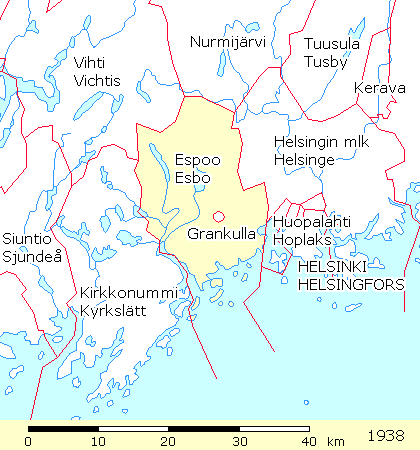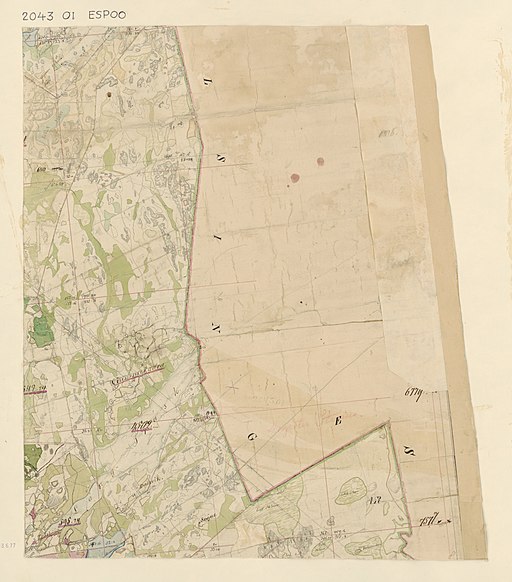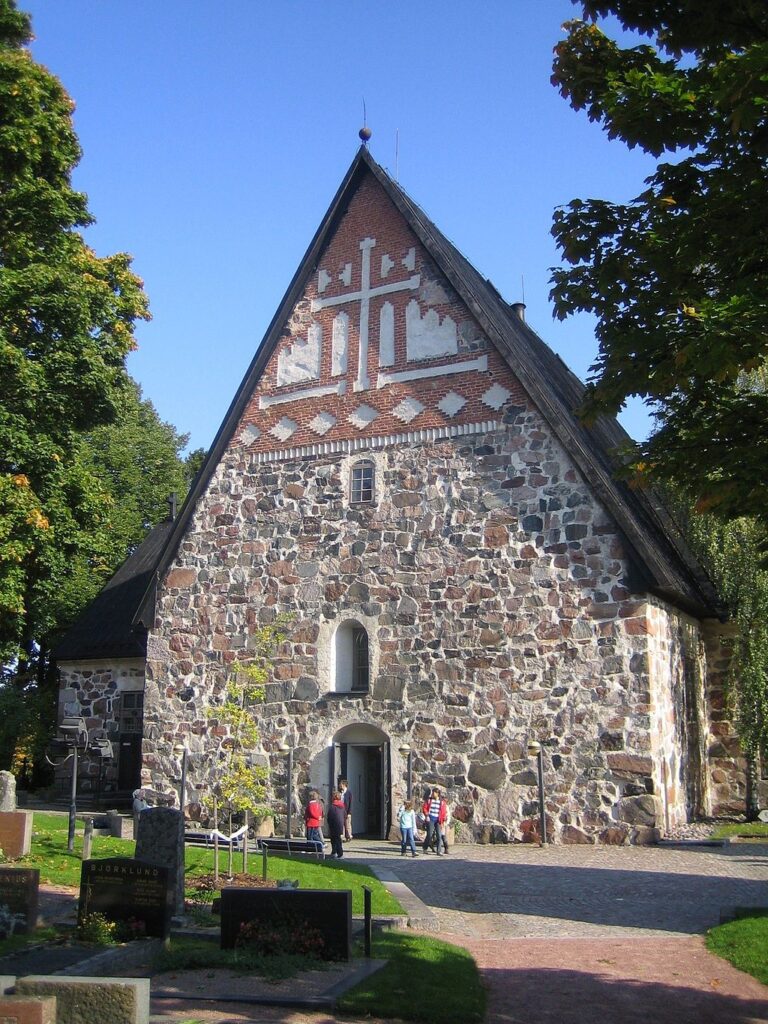Nyland
Esbo
Land & Livelyhood
Immigrants from Sweden established permanent agricultural settlements in the area that became Esbo begining in the 13th century. In 1920, agriculture remained the primary source of income. In the 1940’s and 1950’s it quickly grew into an industrial area. 1, 2
Parish History
- Esbo was originally a part of the Kikkonummi parish
- The earliest document directly referring to Esbo is dated 1431
- It became an independent parish in 1492
- In the early 1920s, Esbo was still a rather small rural parish 2
Of Interest
The name Esbo likely comes from two Swedish words; ‘äspe’ meaning a border of aspen and ‘å’ which means river, thus a ‘river bordered by aspen’. This name was first mentioned in 1431. The banks of the river today, are still heavily populated with aspen. 1
Villages & Farms
- Smedsbacka
- Trastböle
- Arbets
- Farm names not listed in the parish records of 1791–1796
- Sys/Sijs
- Bell
- Backis
- Makas
- Juss
- Kosk
- Korsbacka
- Kaval
- Oilas
- Smeds
- Farm names not listed in the parish records of 1791–1796
- Farm names not listed in the parish records of 1791–1796
- Stor Bola
- Lill Bola
- Farm names not listed in the parish records of 1791–1796
- Farm names not listed in the parish records of 1791–1796
- Nygrann
- Wälfvars
- Mölnare
- Ervast
- Joos
- Fansas
- Olars
- Niss
- Bensuls
- Inglas
- Gammal Finns
- Nyfinns
- Farm names not listed in the parish records of 1791–1796
- Farm names not listed in the parish records of 1791–1796
- Farm names not listed in the parish records of 1791–1796
- Juva
- Ers
- Niku
- Röös
- Juun
- Sveins
- Krapp
- Nappral
- Storgård
- Smeds
- Smeds el. Lillgård
- Farm names not listed in the parish records of 1791–1796
- Farm names not listed in the parish records of 1791–1796
- Farm names not listed in the parish records of 1791–1796
- Storhemt
- Lillhemt
- Ers
- Glims
- Jörf
- Farm names not listed in the parish records of 1791–1796
- Stor Klåbb
- Lill Klåbb
- Stor
- Lillars
- Farm names not listed in the parish records of 1791–1796
- Juus
- Smeds
- Malm
- Kurt
- Ingas
- Peta
- Pell
- No farm name listed
- Saka
- Lill Pass
- Pelli
- Poisa
- Gäster
- Storgård
- Ilars
- Muster
- Farm names not listed in the parish records of 1791–1796
- Östergård
- Wästargård
- Farm names not listed in the parish records of 1791–1796
- Farm names not listed in the parish records of 1791–1796
- Niss
- Hinds
- Peet
- Jupper
- Stenbacka
- Bastvik
- Michels
- Lammans
- Teir
- Arfveds
- Stor Mint
- Lill Mint
- Hannus
- Bondas
- Lapi Peij
- Farm names not listed in the parish records of 1791–1796
- Farm names not listed in the parish records of 1791–1796
- Lassila
- Kihi
- Hista
- Nikula
- Punio
- Herbacka
- Brobacka
- Heinäs
- Konungs
- Maula
- Heickilä
- Sågars
- Farm names not listed in the parish records of 1791–1796
- Farm names not listed in the parish records of 1791–1796
- Farm names not listed in the parish records of 1791–1796
- Farm names not listed in the parish records of 1791–1796
- Farm names not listed in the parish records of 1791–1796
- Håfs
- Nybys
- Buus
- Eskas
- Guss
- Jofs
- Steins
- Smeds
- Gjerck
- Westergård
- Farm names not listed in the parish records of 1791–1796
- Stor
- Lill eller Klemets
- Hjerbacka
- Tyskas
- Neus
- Antas
- Farm names not listed in the parish records of 1791–1796
- Farm names not listed in the parish records of 1791–1796
- Domas
- Suna
- Grå
- Jofs
- Kirsti
- Backas
- Lagstad
- Farm names not listed in the parish records of 1791–1796
- Jofs
- Frantz
- Kärrans
- Storguss
- Lillgus
- Sågars
- Nyhommas
- Farm names not listed in the parish records of 1791–1796
- Wästergård
- Östergård
Folk Dress
Each parish has a unique folk dress. Parish folk dress can be recognized by its style, colors, and patterns.
Esbo folk dress photos used with permission of the Brage costume agency. 7
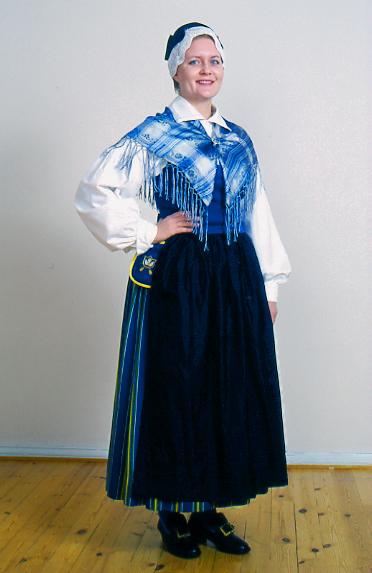
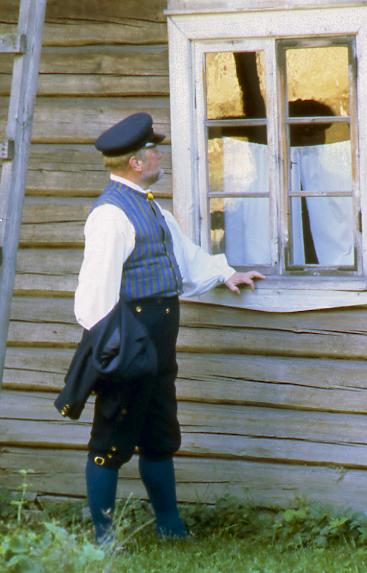
Resources:
- Esbo, https://en.wikipedia.org/wiki/Espoo
- Esbo, https://www.espoo.fi/en-US/City_of_Espoo/Information_about_Espoo > Information about Espoo> History
- Esbo Church, https://en.wikipedia.org/wiki/Espoo_Cathedral
- Esbo Church, https://www.espoonseurakunnat.fi/osallistu/lutheran/premises/road-churches
- Esbo Church, http://www.muuka.com/finnishpumpkin/churches/e/church_e.html
- Esbo Church image, https://commons.wikimedia.org/wiki/File:Espoo_Cathedral.jpg
- Esbo Folk Dress image, Brage costume agency, Woman’s dress: https://www.brage.fi/sve/draktbyra/draktbyran/folkdrakter/view-163648-20 Man’s dress: https://www.brage.fi/sve/draktbyra/draktbyran/folkdrakter/view-163648-21
- Esbo parish, Genealogical Society of Finland, HisKi project, , http://hiski.genealogia.fi/hiski/aba128?en+0035
- Esbo Parish Maps, National Archives of Finland https://commons.wikimedia.org/wiki/Category:Parish_Atlas_of_Finland_1840%E2%80%931865
- Esbo Parish Communion records, https://www.sukuhistoria.fi/sshy/index_sve.htm
- Esbo Parish Communion records, https://www.sukuhistoria.fi/sshy/sivut/HisKi-digiarkisto.php?bid=6941

